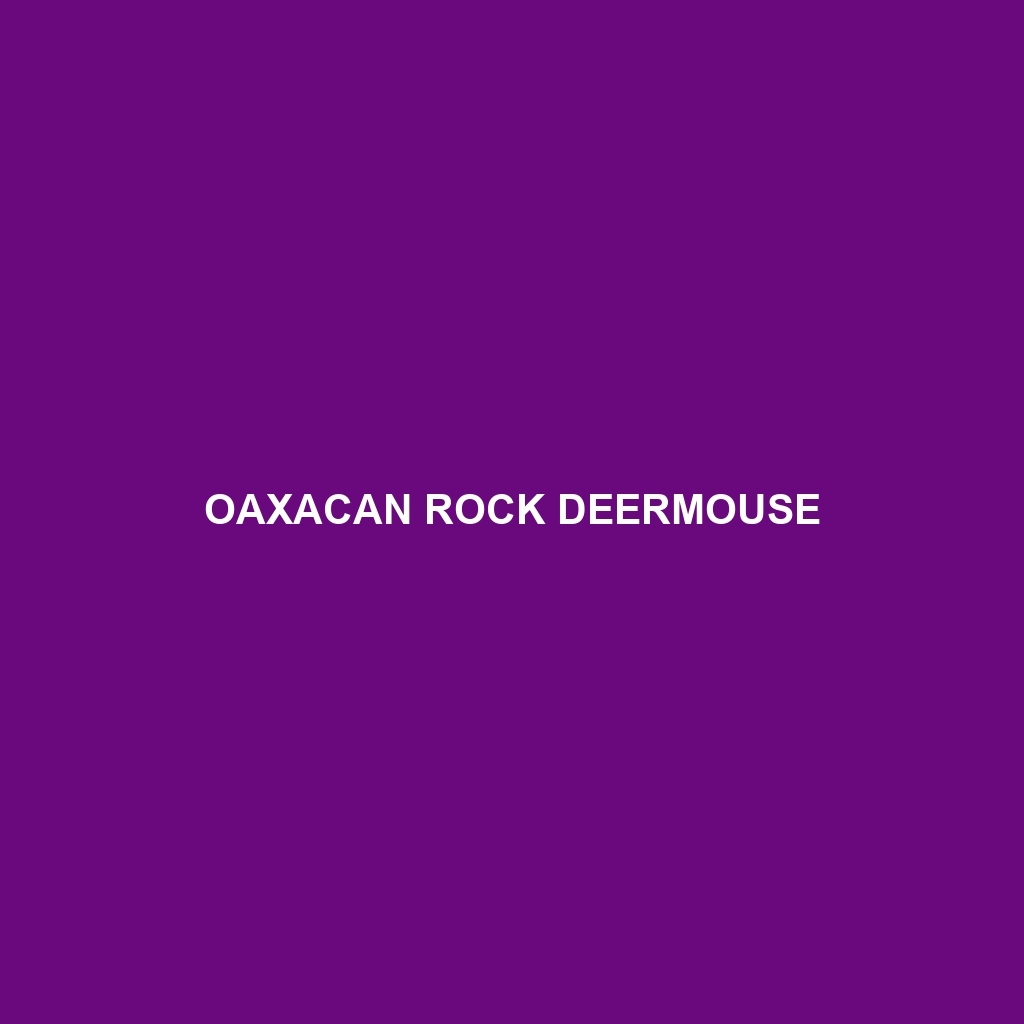Oaxacan Rock Deermouse – A Detailed Species Description
Common Name: Oaxacan Rock Deermouse
Scientific Name: Peromyscus oaxacus
Habitat
The Oaxacan Rock Deermouse primarily inhabits the mountainous regions of southern Mexico, particularly in the state of Oaxaca. This species thrives in rocky outcrops and shrubland environments, where it is often found at elevations ranging from 1,000 to 2,600 meters. The preferred habitat includes thickets and dry forests, which provide ample shelter and resources for this elusive rodent.
Physical Characteristics
Oaxacan Rock Deermice are medium-sized rodents, measuring approximately 12 to 15 cm in body length, with a tail that can be nearly as long. Their fur is typically light brown to grayish, featuring a soft texture and a lighter underbelly. One of their distinctive characteristics is their large, rounded ears and relatively long hind feet, which aid in their agile movements among rocky terrains. Their vibrant eyes provide excellent night vision, making them well-adapted to their natural habitat.
Behavior
These mice are primarily nocturnal, displaying increased activity during the night to avoid predators. Oaxacan Rock Deermice are known for their excellent climbing abilities, often utilizing rocky surfaces to escape threats and search for food. They are also highly territorial, with males exhibiting a range of vocalizations to establish dominance during mating seasons. Social structures can vary, with some rodents living solitarily while others form small family groups.
Diet
The diet of the Oaxacan Rock Deermouse consists mainly of seeds, fruits, and leafy vegetation, but they are also known to consume insects and small invertebrates. This omnivorous diet allows them to adapt to the seasonal availability of food sources in their environment. Their foraging habits usually take place at night, when they rely on their keen sense of smell and nighttime vision to locate sustenance.
Reproduction
Reproductive activity in Oaxacan Rock Deermice typically occurs during the rainy season, which varies by location but generally peaks between June and August. Females can give birth to litters of 2 to 6 young after a gestation period of about 25 days. The young are weaned after approximately three weeks and reach sexual maturity within a few months. Parental care is primarily provided by the female, who ensures the safety and nutrition of her offspring.
Conservation Status
As of the latest assessments, the Oaxacan Rock Deermouse is classified as ‘vulnerable’ due to habitat loss and degradation. The ongoing development and agricultural expansion in their native range pose significant threats to their populations. Conservation efforts are necessary to maintain their natural habitats and protect these unique rodents from further decline.
Interesting Facts
– The Oaxacan Rock Deermouse is known for its remarkable climbing skills, allowing it to navigate rocky landscapes effortlessly.
– This species has adapted well to its mountainous habitat, showcasing various behaviors that enable it to reside in challenging environments.
Role in Ecosystem
The Oaxacan Rock Deermouse plays a critical role in its ecosystem by aiding in seed dispersion and serving as a food source for predators, such as owls and snakes. Its foraging activities help to maintain the balance of vegetation in the areas where it resides. By interacting with other species and contributing to the food web, the Oaxacan Rock Deermouse is an integral part of its environmental community.
